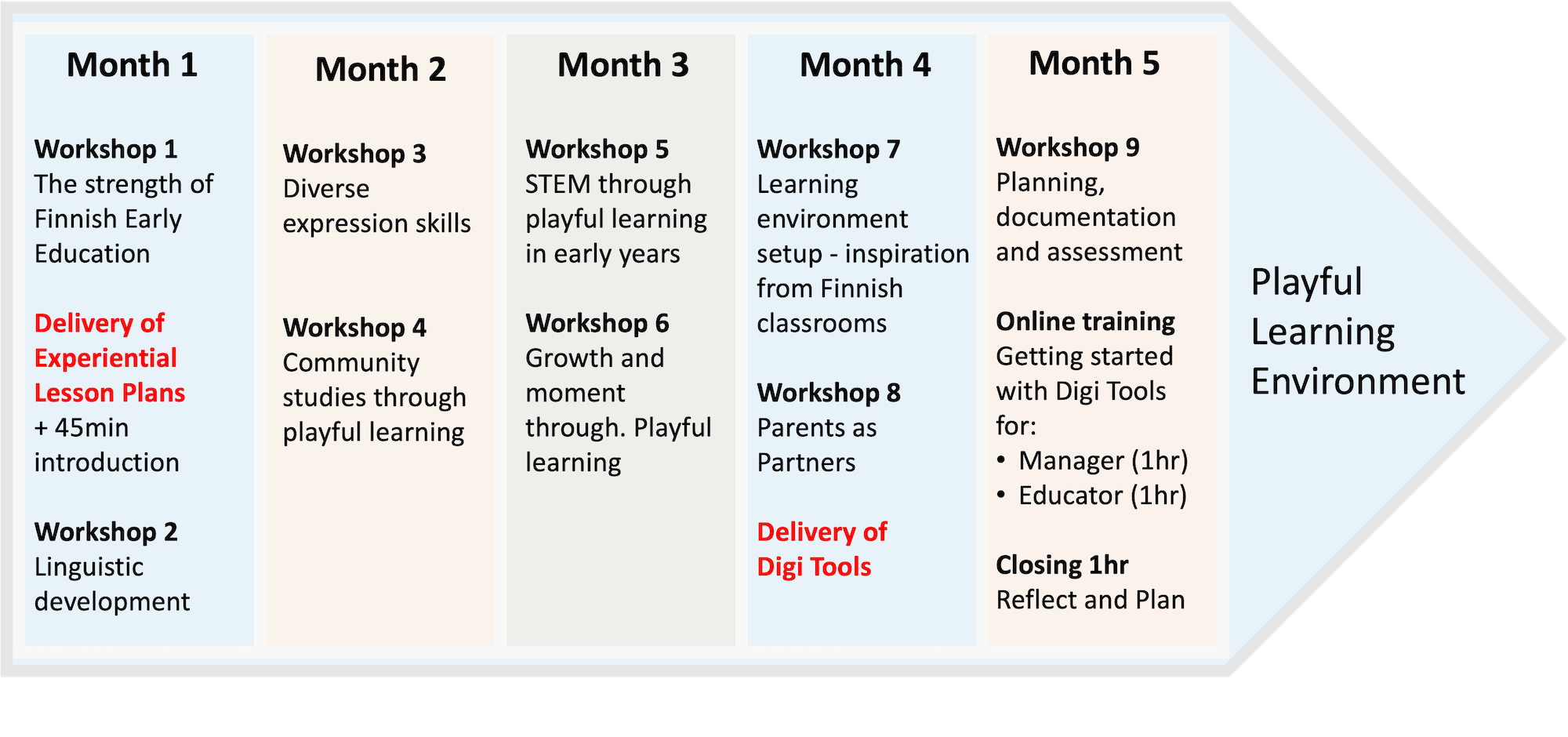Staying competitive is crucial in today's dynamic educational landscape. We understand the many challenges you face in providing the best learning environment for young minds. As we embrace a new year of possibilities, Kindiedays Pro is an affordable and interactive program tailored for preschools with the ambition to grow and be successful.
✨ What is Kindiedays Pro?
Kindiedays Pro isn't just a program; it's your gateway to a preschool transformation. Seamlessly integrating Finnish-style learning principles, expert-led workshops, holistic lesson plans, and digital tools for the entire learning process, Kindiedays Pro ensures your preschool stands at the forefront of innovation.

We lead you through the implementation step by step and support you with mentoring as needed. Expect empowered teachers, engaged families, and joyful child development.
🎉 New Year, New Opportunities - Enjoy 15% Off!
To kickstart your journey, we're offering an exclusive 15% discount, when you contact us before January 31st.
✨ Why Kindiedays for Your Business?
.png)

